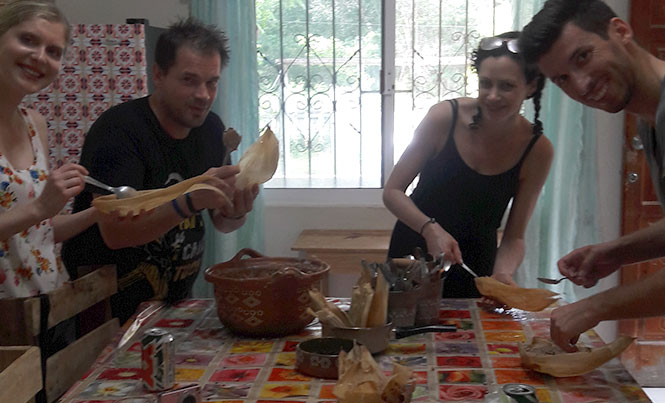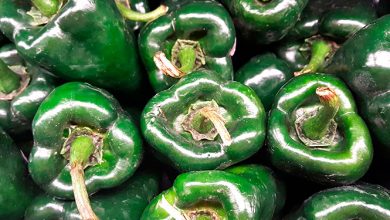Chocolate Tamales (Tamales de Chocolate)
One of the most traditional and ancient cooking techniques used in Mexico is steaming, and tamales are kings in Mexico.

Tamales: sweet or salty, wrapped in cork husk or banana leafs, choose your favorite, we love them all!
Ingredients
300g corn flour nixtamalized (nixtamalizada)
180g rice flour
125g unsalted butter,
125g vegetable lard (Inca is the kind in Mexico)
30g cocoa powder
3 small spoons baking powder
50g cocoa seeds
2 packs of corn husks
Milk, as needed
Preparation
Soak in hot water for at least 30 minutes the two packages of corn husk. Once they are soft, drain and reserve. Roast the cocoa seeds in a pan until the skin cracks easily. Remove all skins, grind the cocoa seeds partially with a mortar, and reserve.
In a big container, add the butter and vegetable lard and knead them until you get a creamy consistency. Add the corn flour, rice flour and baking powder, mix well and start adding the milk, until you have a spreadable consistency.
Start to make the tamales by spreading two spoons in a corn husk, like if you were spreading butter on toast, from the center to the top of the leaf. Sprinkle some ground cocoa seeds and close the tamal by overlapping both sides of the corn husk and fold the rest. In a steamer, cover the bottom with corn husks, arrange the tamales vertically, and cover with more corn husks on top of the tamales. We have to prevent water from entering the tamales at the moment of cooking or they will be very soft.
Close your steamer, and on high-medium heat, let them cook for about one hour. They are ready when you can easily get them out of the husk. Enjoy with a nice coffee and great friends!
If you have questions, especially about the wrapping, please send me an email to riverakitchentulum@gmail.com and I will gladly reply to you!
Follow us on our social media for more traditional Mexican recipes.
Lily Espinosa, riverakitchentulum.com
Mexican Cooking Classes and Culinary Tours







